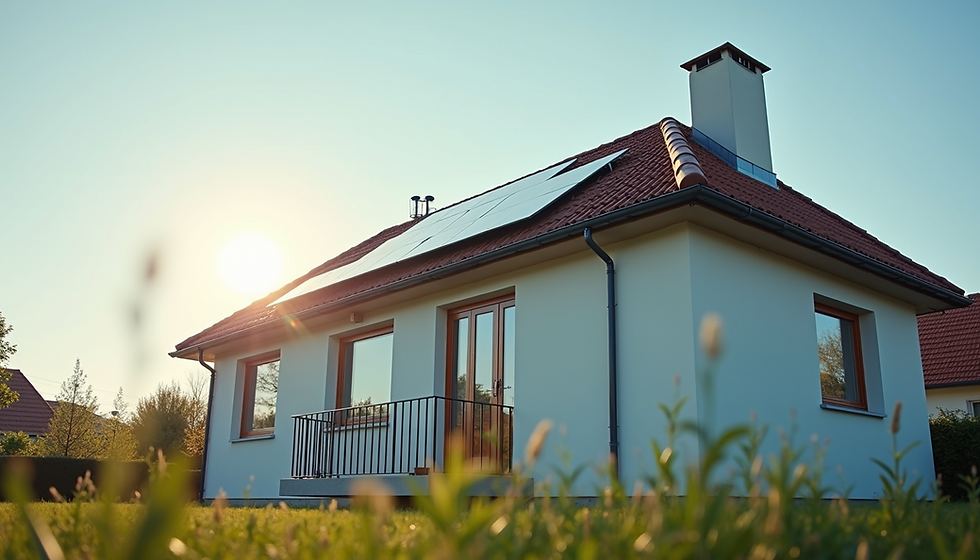The Role of SAP Energy Assessments in Sustainability
- Justin Barker
- Oct 13
- 3 min read
Sustainability has become a critical focus in the construction and property sectors. As energy efficiency standards tighten, understanding how buildings consume energy is essential. One of the key tools in this effort is the SAP assessment. This blog post explores the role of SAP assessments in promoting sustainability, offering practical insights and examples to help you grasp their importance.
Understanding SAP Assessments and Their Importance
SAP assessments, or Standard Assessment Procedure assessments, are a government-approved method for measuring the energy performance of buildings. They provide a rating that reflects how energy-efficient a property is, based on factors such as insulation, heating systems, and ventilation.
These assessments are crucial because they:
Help identify areas where energy consumption can be reduced.
Support compliance with building regulations.
Guide homeowners and builders in making sustainable choices.
Influence property values by highlighting energy efficiency.
For example, a newly built home with high SAP ratings will typically have lower heating bills and a smaller carbon footprint. This makes SAP assessments a valuable tool for anyone involved in property development or renovation.

How SAP Assessments Drive Sustainable Building Practices
SAP assessments encourage sustainable building by providing clear benchmarks for energy performance. Builders and architects use these ratings to design homes that consume less energy and produce fewer emissions.
Some practical ways SAP assessments influence sustainability include:
Material Selection: Choosing insulation and windows that improve thermal efficiency.
Heating Systems: Installing energy-efficient boilers or renewable energy sources like heat pumps.
Ventilation: Incorporating systems that maintain air quality without excessive heat loss.
Renewable Energy Integration: Encouraging the use of solar panels or wind turbines.
By following SAP assessment guidelines, construction projects can reduce their environmental impact significantly. This not only benefits the planet but also results in cost savings for occupants over time.

What does SAP stand for in energy rating?
SAP stands for Standard Assessment Procedure. It is the UK government's method for assessing and comparing the energy and environmental performance of dwellings. The SAP rating is expressed on a scale from 1 to 100+, where a higher score indicates better energy efficiency.
The assessment considers various factors, including:
Building fabric (walls, floors, roofs)
Heating and hot water systems
Ventilation and lighting
Renewable energy technologies
Understanding what SAP stands for helps clarify why these assessments are so integral to sustainable building practices. They provide a standardized way to measure and improve energy use in homes.

Practical Benefits of SAP Assessments for Homeowners and Builders
SAP assessments offer numerous benefits beyond regulatory compliance. For homeowners, a good SAP rating means:
Lower energy bills due to efficient heating and insulation.
Increased comfort with better temperature control.
Higher property value and marketability.
Builders and developers also gain advantages such as:
Clear guidelines to meet or exceed building regulations.
Enhanced reputation for delivering sustainable homes.
Potential eligibility for government incentives or grants.
For example, a builder working on a new extension can use sap energy assessments to ensure the addition meets energy efficiency standards, reducing future energy costs and environmental impact.
Steps to Prepare for a SAP Assessment
Preparing for a SAP assessment involves several key steps to ensure accurate results and maximize energy efficiency:
Gather Building Information: Collect details about construction materials, heating systems, and ventilation. Usually an architect or qualified builder can help gather accurate information and present it in a professional format.
Ensure Proper Insulation: Check that walls, roofs, and floors are insulated according to current ADL1 2022 standards.
Install Efficient Heating Systems: Use modern efficient boilers or consider introducing renewable energy sources.
Consider Renewable Energy Features: Include solar panels or heat pumps in the design.
Hire a Qualified Assessor: Engage a certified professional to conduct the assessment.
Following these steps helps streamline the process and ensures the building achieves the best possible energy rating.
Moving Towards a Greener Future with SAP Assessments
SAP assessments play a vital role in the journey toward sustainable living. By providing a clear picture of a building's energy performance, they empower individuals and businesses to make informed decisions that reduce environmental impact.
As energy regulations evolve and the demand for greener buildings grows, SAP assessments will continue to be an essential tool. Embracing these assessments not only supports sustainability goals but also contributes to healthier, more comfortable living environments.
Whether you are planning a new build, an extension, or simply want to improve your home's energy efficiency, understanding and utilizing SAP assessments is a smart step forward.
By integrating SAP assessments into building projects, we can collectively move towards a more sustainable and energy-efficient future.



Comments